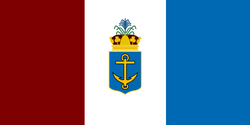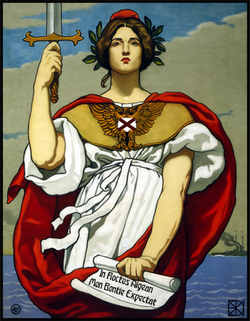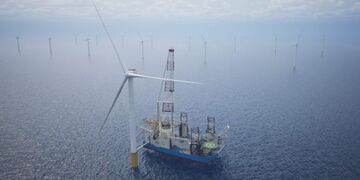Antilles
This article is a work-in-progress because it is incomplete and pending further input from an author. Note: The contents of this article are not considered canonical and may be inaccurate. Please comment on this article's talk page to share your input, comments and questions. |
Script error: The module returned a nil value. It is supposed to return an export table.
Antilles | |
|---|---|
Overseas territory of Burgundie | |
| Acquired for Medimeria | 2014 |
| Capital City | Cruxendale |
| Area | |
| • Total | 9,530.00 sq mi (24,682.59 km2) |
| Population (2020) | |
| • Total | 1,207,204 |
| • Density | 126.7/sq mi (48.91/km2) |
Antilles is an overseas possession of the Burgundie, located off the northern coast of Audonia. It was previously owned by Urcea. As of 2010, the population of the island was slightly less than 800,000, representing a major growth since 2000, in large part due to being a major waystation between Urcea and its possessions in Crona, namely New Harren. Much of the economy of Antilles is devoted to oceangoing activities, and besides its well known position as a Urcean military base, it is a popular destination for Levantine cruise lines. Fishing is also a large industry in Antilles. In 2014, it was exchanged with Burgundie for the island of Medimeria.
Etymology
Antillia was a fabled land far to the east of Levantia written about during antiquity; the name was applied to the Crusader state established in the area.
Geography
Climate
Antilles has a tropical savanna climate, it is hot and dry for eight months of the year. Cold winds are experienced during February and March. The hottest months are from March to July. The island experiences a moderate climate from August to October, tempered by heavy rain and thundershowers, and a slightly cooler climate from November to February. Fog and dew are rare, occurring only during the winter season. It experiences similar monsoon pattern with Northeast monsoon and Southwest monsoon, with the former providing more rain during October to December.
Temperatures during summer generally reach a maximum of 42 °C or 107.6 °F and a minimum of 26.3 °C or 79.3 °F, although temperatures up to 43 °C or 109.4 °F are not uncommon. Winter temperatures range between 29.6 °C or 85.3 °F and 18 °C or 64.4 °F.
| Climate data for Cruxendale (1981-2010) | |||||||||||||
|---|---|---|---|---|---|---|---|---|---|---|---|---|---|
| Month | Jan | Feb | Mar | Apr | May | Jun | Jul | Aug | Sep | Oct | Nov | Dec | Year |
| Record high °C (°F) | 39.1 (102.4) |
38.5 (101.3) |
41.7 (107.1) |
42.1 (107.8) |
44.5 (112.1) |
42.2 (108.0) |
40.6 (105.1) |
40.0 (104.0) |
39.8 (103.6) |
40.0 (104.0) |
38.0 (100.4) |
37.0 (98.6) |
44.5 (112.1) |
| Average high °C (°F) | 30.8 (87.4) |
33.3 (91.9) |
36.0 (96.8) |
37.2 (99.0) |
37.9 (100.2) |
37.2 (99.0) |
36.5 (97.7) |
36.2 (97.2) |
35.1 (95.2) |
33.1 (91.6) |
30.6 (87.1) |
30.0 (86.0) |
34.5 (94.1) |
| Average low °C (°F) | 19.6 (67.3) |
21.5 (70.7) |
23.4 (74.1) |
25.6 (78.1) |
26.3 (79.3) |
26.2 (79.2) |
25.9 (78.6) |
25.5 (77.9) |
24.6 (76.3) |
23.7 (74.7) |
22.7 (72.9) |
21.3 (70.3) |
23.9 (75.0) |
| Record low °C (°F) | 15.6 (60.1) |
10.5 (50.9) |
16.9 (62.4) |
19.4 (66.9) |
17.8 (64.0) |
17.8 (64.0) |
19.4 (66.9) |
20.6 (69.1) |
18.5 (65.3) |
18.9 (66.0) |
17.2 (63.0) |
16.7 (62.1) |
10.5 (50.9) |
| Average precipitation mm (inches) | 8.5 (0.33) |
11.0 (0.43) |
18.3 (0.72) |
60.1 (2.37) |
80.6 (3.17) |
34.3 (1.35) |
56.9 (2.24) |
93.9 (3.70) |
121.5 (4.78) |
185.8 (7.31) |
147.2 (5.80) |
51.3 (2.02) |
869.4 (34.23) |
| Average precipitation days | 0.8 | 1.1 | 1.2 | 3.3 | 4.0 | 2.2 | 2.9 | 4.6 | 6.6 | 9.7 | 6.8 | 3.4 | 46.6 |
| Average relative humidity (%) | 77 | 77 | 76 | 72 | 70 | 68 | 70 | 71 | 71 | 76 | 78 | 78 | 74 |
| Average ultraviolet index | 7 | 7 | 8 | 8 | 8 | 8 | 8 | 8 | 7 | 7 | 6 | 6 | 7 |
| [citation needed] | |||||||||||||
History
Permanent settlement of Antilles began in the third century, but it remained largely isolated until its conquest by the Oduniyyad Caliphate in the 800s, at which point the island became known as Dirikah. Despite its position relatively close to the heartlands of the Caliphate, the island remained sparsely populated and was home to several dozen sleepy fishing villages until the beginning of the Crusades in Audonia in the 12th Century. Despite the failures of the Crusades to make significant headway against the Caliphate, a Crusader state was established on Dirikah among other areas in Audonia. Crusaders from Levantia easily overcame the disorganized and largely undefended villages of the island in 1201 and joined the island to the newly formed Kingdom of Antillia, a shortlived Crusader state. Although the rest of Antillia was overrun, Christian refugees from the collapsing Crusader states came to the island as the Kingdom's court took residence on the island.
Due to strong defenses of remaining Knights, the Caliphate tried and failed three times to take the island, in 1240, 1291, and 1372, after which point the insignificant island's threat as a Crusader point of attack was lost. A period of relative peace and stability followed as the population grew to about fifty thousand, mostly Catholics. The Kingdom's era of peace ended when trading interests in the Kingdom of Gassavelia reestablished connection between Levantia and the island in 1491, after which point Gassavelian forces subverted the Kingdom before its eventual conquest by Gassavelians in 1519. After a few years of stable Gassavelian rule, the Protestant reformation lead to the Gassavelian abandonment of Catholicism, at which point Antilles largely viewed itself as in rebellion, although several expeditions from Levantia continually reestablished order.
As a consequence of the Kingdom of Gassavelia's destruction and partition during the Great Confessional War, ownership of Antilles passed to the Apostolic Kingdom of Urcea, Gassavelia's sole overseas possession. Urceopolis largely consented to self-rule as part of a lack of interest during the late 16th and early 17th centuries, but growing Occidental interests in Audonia and beyond lead to Urcean trade interests taking root on the island.
Antilles was an island of significant strategic importance during the Second Great War, as control of the island allowed for Levantine access into the Gulf of Kandara. Urcea's naval base on the island, at Fort St. James, housed the Far Eastern Squadron, led during the early war by the two Restoration-class battleships. The island's strong connection to Burgundie began during the war, as it became a large staging area for Burgundie's forces, building a connection between the Burgoignesc and the local population. Antilles also became the site of basing for the Royal Air Service of Burgundie, strengthening the Antilles-Burgundie connection during the period. Some Burgoignesc servicemen decided to settle down and marry into the local communities. A handful of second-generation Burgoignesc and a large number of Burgoignesc-descendants were still on Antilles by the time Burgundie took control of the island.
Urcea's growing interest in New Harren leading up to and during the War of the Northern Confederation lead to an explosion in population and activity on the island, as military materiel, potential colonists, and diplomatic parties flooded through the island as part of a stopping off point between the Urcean Metropole and Crona. The island remains an important midway point between Levantia and Crona for trade interests in Levantia and Sarpedon. In 2014, Urcea exchanged the island with Burgundie for the island of Medimeria.
Transitional Government
In 2014, the governments of Urcea and Burgundie confirmed a reorganization of their overseas territories in the Levantine Ocean to align with their modern interests in Crona. With Burgundie’s continuing interest in Alshar and Urcea’s growing interests in Crona the swapping of administrative control of Medimeria and Antilles helped both nations. This restructuring was part of the Burgoignesc 21st Century Global Strategic Restructuring Plan, specifically the Pathways to Punth Initiative.
Government
| This article is part of a series on the |
| BORA |
|---|
 |
| Statistics |
|
| Key topics |
| Provinces |
|
Burgundie portal |
Antilles is part of the Burgoignesc Overseas Territory Assembly's Polar Burgundies geographic designation. Burgoignesc Overseas Territory Assembly is a constituent country equivalent of Burgundie with its own assembly, prime minister, budget, and laws. Burgundie's national governmental influence is limited to subsidies, education, and security, however, its financial and cultural institutes cast a long shadow across Antilles.
Antilles is a province within Burgoignesc Overseas Territory Assembly with its own semi-elected Governor-Epistates, representative legislative body, and court system.
Antillesans are Burgoigniacs/Burgoignix with complete civil and economic rights, and citizenship (political rights) under the same federal service criteria as all residents of Burgundie. Burgoignesc is the official language but Lebhan and Burgoignesc are both in use.
Provincial executive
The provincial executive is the Governor-Epistates. Three candidates are elected by a single transferable vote election held every 5 years, the three candidates are presented to the Court of St. Alphador and the next Governor-Epistates is chosen from these candidates. If the citizenry rejects the selection, a run-off election is held with the remaining two candidates.
Provincial legislature
Like the Citizens Court of the National Assembly (Burg. La Assemblee de Ciutadans de l'Assemblee Nacional, ACAN), The Antillesan Citizen's Court of the Provincial Assembly is a unicameral legislator. It makes provincial law, has the power of the provincial purse, and has the power of impeachment, by which it can remove sitting members of the provincial government. The Assembly has three seats for each province, one for the Burgoignesc Overseas Territory Assembly's Antillesan liaison, 3 for the clergy, 3 seats reserved for municipal leaders, and 3 for a rota of private business leaders. On 6 occasions throughout the year 3 more seats are opened to the public to debate topics that are not on the annual legislative agenda.
Administrative divisions and local governance
Military
Military installations
| TBD | |
|---|---|
| | |
| Site information | |
| Owner | Burgoignesc Security Forces |
| Operator | Navy of Burgundie |
| Controlled by | TBD |
| Condition | Operational |
| Site history | |
| Built | TBD |
| Garrison information | |
| Occupants | Navy
|
Emergency response
National Gendarmerie of Burgundie, Overseas Gendarmerie, Middle Seas Command
Revenue Guard, Grand Station of the Orient
Society
| This article is part of a series on the |
| Culture in Burgundie |
|---|
 |
| Society |
| Arts and literature |
| Other |
|
Burgundie portal |
Religion, ethnicity, language, education, attitudes and worldview, kinship and family, cuisine, arts, literature, architecture, sports, symbols
Economy
Standard of living
Employment
Because Antilles' economy is a high-low mix of sectors from research to traditional agriculture, opportunities abound for Antilliens at all skill and education levels, which has helped the islands maintain a fairly steady unemployment rate of around X% for the last decade. Burgundie's high emphasis on education translates to a particularly educated and skilled workforce, leading to lower unemployment compared to less educated countries in Audonia. The islands' economic diversity cushions against overreliance on any single industry, which has demonstrably made the island more resilient during downturns. Since Burgundie strives for Total Economic Engagement and espouses equal rights and opportunities regardless of gender, race, ethnicity, ability, or background, Antilles benefits from improved access to education and training, impacting employment prospects across various fields.
Agriculture
Tourism and hospitality
Logging/Mineral extraction
Paper milling
Mining
Drilling
Fishing
Fishing and fisheries
Distant-water fishing fleet
Local commercial fishing
Aquaculture
Main article: Aquaculture Aquatic life farming, in general
- Pisciculture- fish farming
- Mariculture- Saltwater fish farming
- shrimp farming
- oyster farming
- algaculture
Artisanal/heritage industries
Science and research
Manufacturing
Creative industries
Sports and leisure
Trade
| Port Nova Martillia | |
|---|---|
 | |
| Location | |
| Country | |
| Details | |
| Opened | 1949 |
| Employees | 550 |
| Statistics | |
| Vessel arrivals | 179 |
| Annual cargo tonnage | 805.219 tonnes |
| Annual revenue | ₮25 million |
Transshipment
Main article: Transshipment
Customs and tariffs
Main article: Customs
Infrastructure
Maritime
Lighthouses
Rail
Antilles uses Standard gauge, 1,435 mm (4 ft 8+1⁄2 in) for both freight and passenger rail.
Istroyan Rail- Istroyan Rail (Burg: Istroie Ferroviaire), is the public-private joint-venture, intercity, passenger rail operator in Torlen, Antilles, Alcairet, and Chaukhira. It owns and operates all rail corridors, rights of way, and rolling stock that serve this purpose.
Roads
Air
Antilles has one international airport, the St. Michael in the Antilles International Airport, in metro Abu-Ouncanobi.
| Name | Location | Type | Brief description | Code(s) | Picture |
|---|---|---|---|---|---|
| St. Michael in the Antilles International Airport | Passenger and cargo | 24/7/365 air traffic control operations, 1x runway, capable of receiving all but the largest airframes, cargo terminal, passenger terminal, complete maintenance facilities, integrated customs and border control service | ATRO: ANB
ICAO: AANB |
[[|150px|center]] |
Energy and electricity
Phone service and internet
Phone service is provided by Great Seas BurgunMobile, Vintage Wireless, and National Wireless Services, which have 27, 18, and 9 towers respectively across the island. 100% of the island and its population are covered by at least one of the services, National Wireless Services covering the less densely populated and therefore less profitable areas. Copperwire and fiberoptic phone still exists, one or both are required for all municipal and emergency response connections, and people along the route are allowed to buy in, but during emergencies their calls are de-prioritized in favor of emergency response calls, which is the same with mobile service on the island.
Highspeed internet service is provided by Great Seas BurgunMobile, Vintage Wireless, and Extron Burgundie Mobile. Residential internet speeds average 2-3 gigabits while commercial speeds are typically higher in the 3-4 gigabit range.
There is also a Global Maritime Distress and Safety System repeater and beacon on the island.
See also
- Pages using duplicate arguments in template calls
- Incomplete articles
- Pages using infobox settlement with missing country
- Pages using infobox settlement with no map
- Pages using infobox settlement with no coordinates
- All articles with unsourced statements
- Articles with unsourced statements
- Pages using country topics with unknown parameters
- Burgundie
- Sub-national Regions in Burgundie
- Burgundie Problem Articles
- Islands
- Burgoignesc islands

